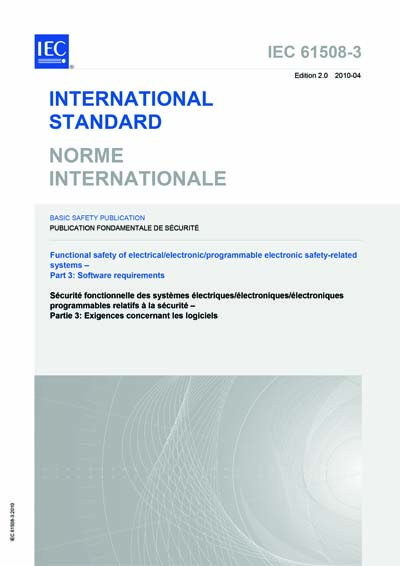Most recent
IEC 61508-3 Ed. 2.0 b:2010
Functional safety of electrical/electronic/programmable electronic safety-related systems - Part 3: Software requirements
"IEC 61508-3:2010 applies to any software forming part of a safety-related system or used to develop a safety-related system within the scope of IEC 61508-1 and IEC 61508-2; provides specific requirements applicable to support tools used to develop and configure a safety-related system within the scope of IEC 61508-1 and IEC 61508-2; requires that the software safety functions and software systematic capability are specified; establishes requirements for safety lifecycle phases and activities which shall be applied during the design and development of the safety-related software. These requirements include the application of measures and techniques, which are graded against the required systematic capability, for the avoidance of and control of faults and failures in the software; provides requirements for information relating to the software aspects of system safety validation to be passed to the organisation carrying out the E/E/PE system integration; provides requirements for the preparation of information and procedures concerning software needed by the user for the operation and maintenance of the E/E/PE safety-related system; provides requirements to be met by the organisation carrying out modifications to safety-related software; provides, in conjunction with IEC 61508-1 and IEC 61508-2, requirements for support tools such as development and design tools, language translators, testing and debugging tools, configuration management tools. This second edition cancels and replaces the first edition published in 1998. This edition constitutes a technical revision. It has been subject to a thorough review and incorporates many comments received at the various revision stages. It has the status of a basic safety publication according to IEC Guide 104.
NEW! Also available: IEC Standards+ 61508:2010, containing all parts, together with a commented Redline version. Changes made in this 2nd edition are highlighted and commented by a leading world expert."
International Electrotechnical Commission [iec]

